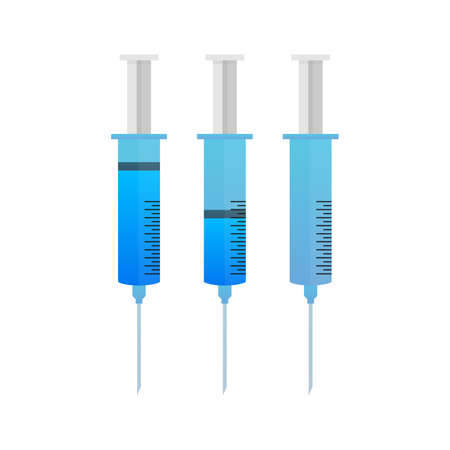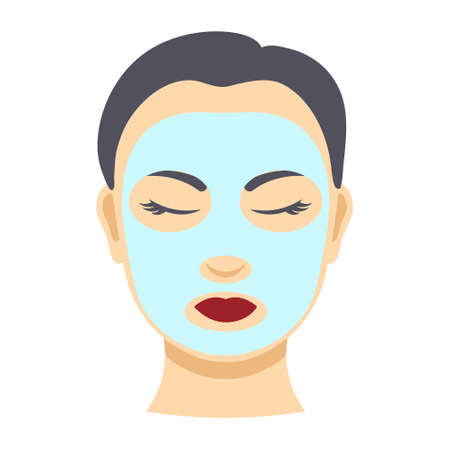1. Introduction to Dermal Fillers
Dermal fillers have become one of the most popular treatments in the world of aesthetic medicine. These injectable substances help restore volume, smooth out wrinkles, and enhance facial contours without the need for surgery. But what exactly are dermal fillers, and how do they compare to other cosmetic procedures?
What Are Dermal Fillers?
Dermal fillers are gel-like substances injected beneath the skin to provide volume, hydration, and support. They are commonly used to treat signs of aging such as fine lines, wrinkles, and loss of facial fullness. The most widely used fillers contain hyaluronic acid (HA), a naturally occurring substance in the body that helps retain moisture and elasticity.
Why Are Dermal Fillers So Popular?
The demand for non-surgical cosmetic treatments has skyrocketed in recent years. People prefer minimally invasive procedures that offer noticeable results with little to no downtime. Dermal fillers fit this need perfectly by providing instant improvements with a simple in-office treatment.
How Do Dermal Fillers Compare to Other Cosmetic Procedures?
When considering facial rejuvenation or enhancement, there are multiple options available. Below is a comparison of dermal fillers with other popular cosmetic procedures:
| Treatment | Purpose | Invasiveness | Downtime |
|---|---|---|---|
| Dermal Fillers | Adds volume, smooths wrinkles, enhances facial features | Minimally invasive (injections) | LITTLE TO NONE – mild swelling or bruising may occur |
| BOTOX® | Relaxes muscles to reduce dynamic wrinkles (e.g., forehead lines) | Minimally invasive (injections) | LITTLE TO NONE – minor redness or swelling possible |
| Surgical Facelift | Tightens sagging skin and reshapes facial structure | Surgical (requires anesthesia) | SIGNIFICANT – weeks of recovery time needed |
| Laser Resurfacing | Improves skin texture, reduces scars and pigmentation | Minimally invasive (laser treatment) | MILD TO MODERATE – redness and peeling for several days |
The Growing Trend of Non-Surgical Aesthetic Treatments
The shift toward non-invasive beauty treatments continues to grow, with dermal fillers leading the way. Their ability to deliver natural-looking results with minimal discomfort makes them a preferred choice for individuals looking to enhance their appearance without committing to surgery.
2. Key Ingredients and Types of Dermal Fillers
Dermal fillers are made from different biocompatible materials that help restore volume, smooth out wrinkles, and enhance facial contours. Understanding the key ingredients in these fillers can help you choose the right option for your aesthetic goals.
Hyaluronic Acid (HA)
Hyaluronic acid is one of the most popular filler materials. It’s a naturally occurring substance in the skin that retains moisture, keeping the skin plump and hydrated. HA fillers are commonly used to add volume to the lips, smooth out fine lines, and restore lost facial volume.
Benefits of Hyaluronic Acid Fillers
- Provides natural-looking results
- Can be dissolved with hyaluronidase if needed
- Hydrates the skin while adding volume
- Temporary but long-lasting effects (6-18 months)
Calcium Hydroxyapatite (CaHA)
Calcium hydroxyapatite is a mineral-like compound found in human bones. When used in dermal fillers, it provides structural support and stimulates collagen production. CaHA fillers are thicker than HA fillers, making them ideal for deeper wrinkles and facial contouring.
Benefits of Calcium Hydroxyapatite Fillers
- Stimulates natural collagen production
- Provides longer-lasting results (up to 12 months or more)
- Effective for deeper wrinkles and volume loss
- Biodegradable and safe for use
Poly-L-Lactic Acid (PLLA)
Poly-L-lactic acid is a biodegradable synthetic material that works by stimulating collagen production over time. Unlike other fillers that provide immediate volume, PLLA fillers gradually improve skin texture and firmness, making them ideal for treating significant volume loss.
Benefits of Poly-L-Lactic Acid Fillers
- Boosts collagen production for long-term improvement
- Gradual, natural-looking results over several months
- Lasts up to two years or more
- Ideal for restoring facial volume loss due to aging
Comparison of Common Dermal Filler Ingredients
| Filler Type | Main Ingredient | Best For | Duration | Key Benefits |
|---|---|---|---|---|
| Hyaluronic Acid (HA) | Hyaluronic Acid | Lips, fine lines, facial volume restoration | 6-18 months | Adds hydration, reversible, soft texture |
| Calcium Hydroxyapatite (CaHA) | Calcium Hydroxyapatite Microspheres | Deeper wrinkles, jawline contouring, volume loss | 12+ months | Stimulates collagen, firm structure, long-lasting |
| Poly-L-Lactic Acid (PLLA) | Synthetic Poly-L-Lactic Acid | Severe volume loss, skin rejuvenation | Up to 2 years | Gradual improvement, collagen stimulation, durable results |
The choice of dermal filler depends on your specific needs and desired outcomes. Whether youre looking for subtle lip enhancement or significant facial contouring, understanding these key ingredients can help guide your decision.

3. How Dermal Fillers Work in the Skin
Dermal fillers are a popular cosmetic treatment designed to restore volume, smooth wrinkles, and enhance facial contours. But how exactly do they work beneath the surface of the skin? Understanding the science behind dermal fillers can help you appreciate their benefits and how they create a more youthful appearance.
Restoring Volume and Hydration
The primary function of most dermal fillers is to replace lost volume in the skin. As we age, our bodies produce less collagen and hyaluronic acid—two essential components that keep our skin firm and hydrated. Many fillers contain hyaluronic acid (HA), a substance naturally found in the body that attracts and retains moisture. When injected, HA-based fillers plump up the skin by binding water molecules, instantly restoring lost volume and hydration.
Comparison of Common Filler Ingredients
| Filler Ingredient | Main Function | Longevity |
|---|---|---|
| Hyaluronic Acid (HA) | Binds water for hydration and volume | 6-18 months |
| Calcium Hydroxylapatite (CaHA) | Stimulates collagen production | 12-24 months |
| Poly-L-lactic Acid (PLLA) | Keeps stimulating collagen over time | Up to 2 years |
| Polymethyl Methacrylate (PMMA) | Permanently supports skin structure | Semi-permanent |
Smoothing Wrinkles and Fine Lines
Aging causes the skin to lose elasticity, leading to wrinkles and fine lines. Dermal fillers help by filling in these creases from beneath the surface, smoothing out lines around areas such as the mouth, eyes, and forehead. The effect is immediate with HA-based fillers, while biostimulatory fillers like PLLA gradually improve skin texture over time.
Stimulating Collagen Production for Long-Term Benefits
Certain types of dermal fillers do more than just add volume—they also stimulate natural collagen production. Fillers containing ingredients like PLLA and CaHA encourage the body to produce new collagen fibers, strengthening the skin’s structure over time. This means that even after the filler itself has been absorbed by the body, the newly generated collagen continues to provide support and maintain a youthful look.
The Gradual Effects of Collagen-Stimulating Fillers
- Immediate results: Some volume restoration occurs right away.
- Collagen growth phase: Over weeks to months, your body builds new collagen.
- Sustained improvement: Skin appears firmer and smoother even after the filler dissolves.
The way dermal fillers interact with your skin depends on their composition and your bodys natural response. Whether you’re looking for instant volume or long-term collagen stimulation, choosing the right type of filler can make all the difference in achieving a refreshed, youthful look.
4. The Procedure: What to Expect
Getting dermal fillers can be an exciting way to enhance your natural beauty, but knowing what to expect can help ease any concerns. Here’s a step-by-step guide to the entire process, from consultation to recovery.
Consultation: Understanding Your Goals
Your journey begins with a consultation with a qualified provider. During this appointment, you’ll discuss your aesthetic goals, medical history, and any concerns you may have. The provider will assess your facial structure and recommend the best type of filler for your needs.
The Injection Process
The actual injection process is relatively quick and minimally invasive. Here’s what typically happens:
| Step | Description |
|---|---|
| Preparation | The treatment area is cleansed, and a numbing cream or local anesthetic may be applied to minimize discomfort. |
| Marking | Your provider may mark the areas where the filler will be injected to ensure precise placement. |
| Injection | A fine needle or cannula is used to inject the filler into targeted areas. The provider may gently massage the area to ensure even distribution. |
| Assessment | Your provider will check the results and make any necessary adjustments to achieve a balanced look. |
| Cleansing | The treated area is cleaned again, and post-care instructions are provided. |
Recovery and Aftercare
The recovery process is usually straightforward. Most patients experience mild swelling, redness, or bruising at the injection site, which typically subsides within a few days. To ensure optimal results, follow these aftercare tips:
- Avoid touching or massaging the treated area for at least 24 hours.
- Avoid strenuous exercise, alcohol, and excessive sun exposure for 24-48 hours.
- If needed, apply a cold compress to reduce swelling.
- Stay hydrated and follow any additional guidelines provided by your doctor.
Potential Side Effects
Dermal fillers are generally safe when administered by a trained professional. However, some potential side effects include:
- Mild swelling and redness (common and temporary)
- Slight bruising at the injection site
- Lumps or uneven texture (usually resolves on its own)
- Rare complications like infection or allergic reactions (consult your provider if you notice unusual symptoms)
If you have any concerns after your treatment, reach out to your provider for guidance. Knowing what to expect can help you feel more confident about getting dermal fillers!
5. Safety, Risks, and Longevity
Dermal fillers are generally considered safe when administered by a qualified professional. However, like any cosmetic procedure, there are potential risks and side effects to be aware of. Understanding these factors can help you make an informed decision before getting fillers.
Safety of Dermal Fillers
The FDA approves dermal fillers for specific uses, and they must be administered by licensed professionals. Choosing a board-certified dermatologist or plastic surgeon ensures the highest level of safety. Additionally, most modern fillers are made from biocompatible materials like hyaluronic acid, which naturally occurs in the body.
Common Risks and Side Effects
While dermal fillers are relatively low-risk, some side effects can occur. Most are mild and temporary, but serious complications can happen if fillers are not injected correctly.
| Common Side Effects | Less Common but Serious Risks |
|---|---|
| Redness at injection site | Infection |
| Mild swelling or bruising | Nodules or lumps under the skin |
| Tenderness or slight discomfort | Vascular occlusion (blocked blood vessel) |
| Slight asymmetry (temporary) | Tissue damage (rare) |
Longevity of Dermal Fillers
The duration of results depends on the type of filler used, where its injected, and individual factors like metabolism and lifestyle. Below is a general guideline for how long different types of fillers typically last:
| Type of Filler | Typical Duration |
|---|---|
| Hyaluronic Acid (Juvederm, Restylane) | 6-18 months |
| Calcium Hydroxylapatite (Radiesse) | Around 12-18 months |
| Poly-L-lactic Acid (Sculptra) | Around 2 years with multiple treatments |
| Polymethylmethacrylate (Bellafill) | Permanent with touch-ups as needed |
How to Maintain Results Longer
If you want your dermal filler results to last as long as possible, consider these tips:
- Avoid excessive sun exposure and always wear sunscreen.
- Stay hydrated to maintain healthy skin elasticity.
- Avoid smoking and excessive alcohol consumption, which can break down fillers faster.
- Schedule touch-up treatments as recommended by your provider.
- Main a good skincare routine to support overall skin health.
Dermal fillers offer a non-surgical way to enhance facial features and restore lost volume. While they come with some risks, choosing an experienced provider and following aftercare instructions can help ensure a safe and satisfying outcome.
6. Conclusion: Choosing the Right Filler for You
Selecting the right dermal filler is an important decision that requires careful consideration of your goals, facial structure, and the expertise of your provider. With so many options available, it’s essential to understand how different fillers work and what results they can achieve.
Finding the Right Filler for Your Needs
Each type of dermal filler is designed for specific concerns. Some are better suited for restoring volume, while others excel at smoothing fine lines or enhancing facial contours. Here’s a quick comparison:
| Filler Type | Main Ingredient | Best For | Duration |
|---|---|---|---|
| Hyaluronic Acid (HA) | Hyaluronic Acid | Lip enhancement, fine lines, volume loss | 6-18 months |
| Calcium Hydroxylapatite (CaHA) | Calcium-based microspheres | Deep wrinkles, facial contouring | 12-18 months |
| Poly-L-lactic Acid | Synthetic polymer | Collagen stimulation, volume restoration | Around 2 years |
| Polymethylmethacrylate (PMMA) | Tiny acrylic beads with collagen gel | Permanent wrinkle correction, deep folds | Permanent with touch-ups |
The Importance of a Qualified Provider
Your results depend not only on the filler you choose but also on the expertise of the injector. A skilled provider will assess your facial anatomy, discuss realistic expectations, and use techniques that enhance your natural beauty. Always choose a board-certified professional with experience in dermal fillers to ensure safe and satisfying results.
Achieving Natural and Satisfying Results
The goal of dermal fillers is to enhance your appearance while maintaining a natural look. Overfilled lips or overly plumped cheeks can appear unnatural, so its important to communicate openly with your provider about your desired outcome. A conservative approach often yields the best and most long-lasting results.
Your Next Steps
If youre considering dermal fillers, start by researching different types and consulting with a trusted professional. Ask about potential side effects, longevity, and expected outcomes. The more informed you are, the more confident youll feel in making the right choice for your aesthetic goals.


